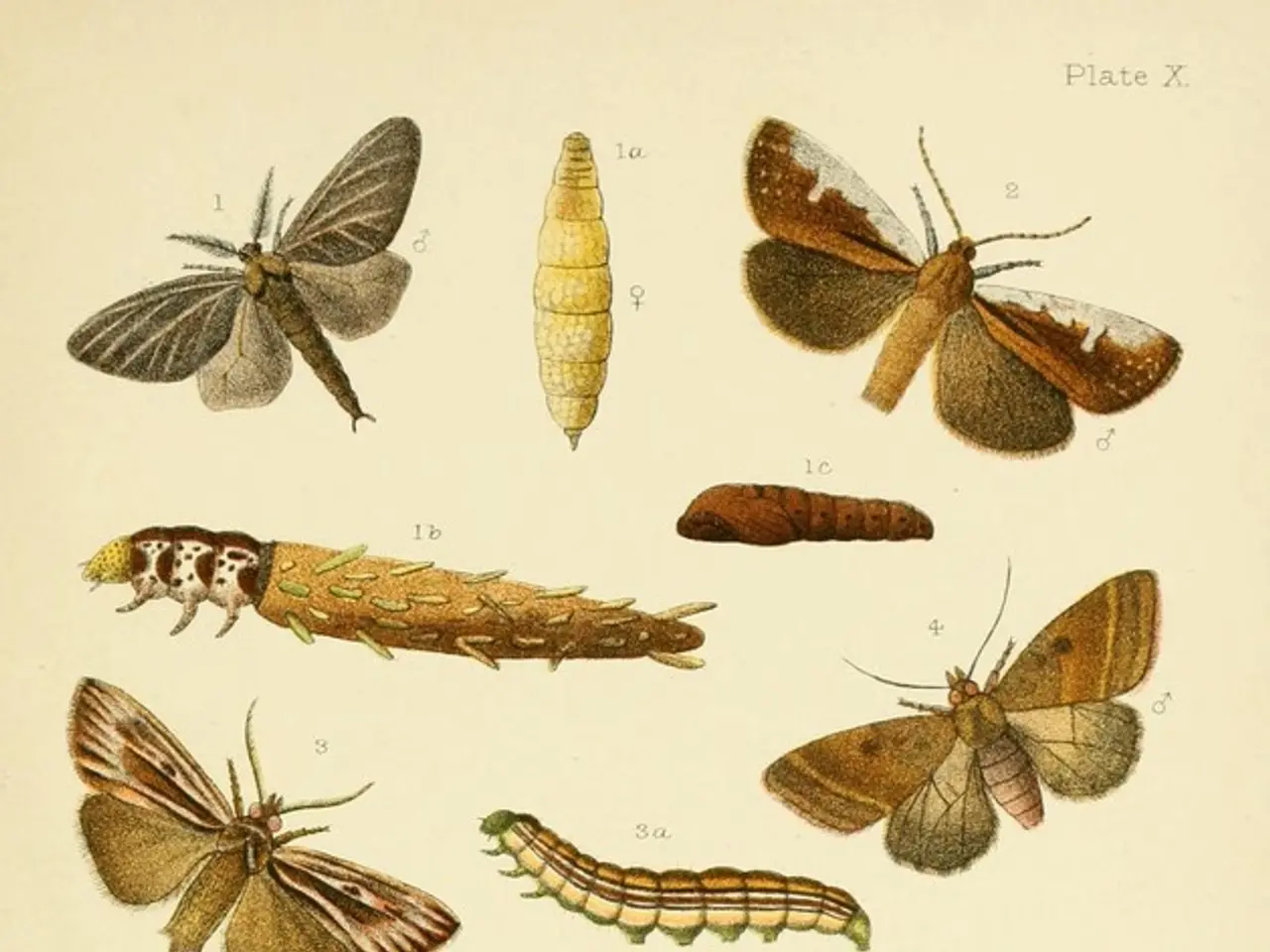Creating instructional manuals for moth identification
In the realm of biology and taxonomy, the process of systematic naming plays a crucial role in identifying, classifying, and understanding organisms. This method, developed by Carolus Linnaeus in the 18th century, assigns unique binomial names to species following international nomenclature rules and classifies them into hierarchical groups reflective of their evolutionary relationships [1][3][4].
One such identified species is the cinnabar moth (Tyria jacobaeae), known for its bright red colouration and role as a day-flying moth. Introduced to New Zealand as a biological control for the noxious weed ragwort, the cinnabar moth's larvae feed on this invasive plant [2].
The Ahi Pepe MothNet project, funded by various organisations including Otago Science into Action, Curious Minds initiative, and the government's national strategic plan for Science in Society, A Nation of Curious Minds - He Whenua Hihiri i te Mahara, is a prime example of this systematic naming approach being applied to moth research and conservation in New Zealand [6].
The project's primary goal is to catalogue moth species accurately, aiding biodiversity monitoring and conservation efforts. To achieve this, the Ahi Pepe MothNet project has produced identification guides specific to South Island regions and, more recently, expanded to include the North Island, providing resources in both English and Māori [7].
In an effort to bridge the gap between science and culture, the Ahi Pepe MothNet project has collaborated with Te Kura Kaupapa Māori o Ōtepoti to create Māori-language guides for moth identification. These guides not only provide context and purpose for the project but also give local moths common names in Māori, such as ātaka for the beautifully mottled Meterana exquisita species [5].
Moreover, the project has moved away from a purely western science presentation of facts and methods towards a more sympathetic weaving of cultural reference, language, education, and science. This approach is evident in the naming of some local moths, like the Tmetolophota purdii, which has been named pākākā due to its chestnut and orange-coloured forewings [5].
The Ahi Pepe MothNet project underscores the importance of systematic naming in enabling clear communication among scientists worldwide, reflecting evolutionary and genetic relationships, and helping in organizing biological diversity into manageable categories [1][2][5]. By using consistent names, researchers can track species, study their evolutionary history, and apply conservation efforts appropriately.
As the project continues to grow and evolve, it serves as a shining example of how scientific research and cultural preservation can work together to further our understanding of the natural world and promote conservation efforts in New Zealand.
References: 1. Britannica, T. (2021). Taxonomy. 2. New Zealand Department of Conservation. (2021). Cinnabar moth. 3. Linnean Society of London. (n.d.). Linnaeus and the invention of binomial nomenclature. 4. International Commission on Zoological Nomenclature. (n.d.). History of the Code. 5. Ahi Pepe MothNet. (n.d.). Moths named in te reo Māori. 6. Ahi Pepe MothNet. (n.d.). Funding. 7. Ahi Pepe MothNet. (n.d.). Resources.
- The Ahi Pepe MothNet project, grounded in environmental science and education-and-self-development, promotes the use of systematic naming in moth research, bridging the gap between lifestyle and scientific exploration.
- By producing identification guides in both English and Māori, and incorporating Māori-language names for local moths, the project demonstrates the value of systematic naming in the intersection of science, environmental science, and cultural preservation.




